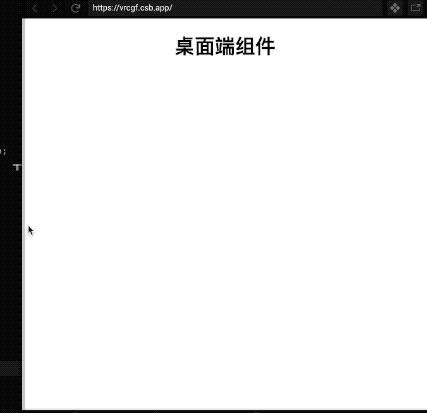您好,登錄后才能下訂單哦!
您好,登錄后才能下訂單哦!
本篇內容主要講解“分析React Hooks響應式布局”,感興趣的朋友不妨來看看。本文介紹的方法操作簡單快捷,實用性強。下面就讓小編來帶大家學習“分析React Hooks響應式布局”吧!
1. 方案一:innerWidth
一個很簡單粗略的方案,是個前端都知道:
const MyComponent = () => { // 當前窗口寬度 const width = window.innerWidth; // 鄰介值 const breakpoint = 620; // 寬度小于620時渲染手機組件,反之桌面組件 return width < breakpoint ? <MobileComponent /> : <DesktopComponent />; }這個簡單的解決方案肯定會起作用。根據用戶設備的窗口寬度,我們可以呈現桌面視圖或手機視圖。
但是,當調整窗口大小時,未解決寬度值的更新問題,可能會渲染錯誤的組件。
2. 方案二:Hooks+resize
說著也簡單,監聽resize事件時,觸發useEffect改變數據。
const MyComponent = () => { const [width, setWidth] = React.useState(window.innerWidth); const breakpoint = 620; React.useEffect(() => { window.addEventListener("resize", () => setWidth(window.innerWidth)); }, []); return width < breakpoint ? <MobileComponent /> : <DesktopComponent />; }但精通Hooks的你,一定知道這里存在內存性能消耗問題:resize事件沒移除!
優化版本:
const useViewport = () => { const [width, setWidth] = React.useState(window.innerWidth); React.useEffect(() => { const handleWindowResize = () => setWidth(window.innerWidth); window.addEventListener("resize", handleWindowResize); return () => window.removeEventListener("resize", handleWindowResize); }, []); return { width }; }3. 方案三:構建useViewport
自定義React Hooks,可以將組件/函數最大程度的復用。構建一個也很簡單:
const useViewport = () => { const [width, setWidth] = React.useState(window.innerWidth); React.useEffect(() => { const handleWindowResize = () => setWidth(window.innerWidth); window.addEventListener("resize", handleWindowResize); return () => window.removeEventListener("resize", handleWindowResize); }, []); return { width }; }精簡后的組件代碼:
const MyComponent = () => { const { width } = useViewport(); const breakpoint = 620; return width < breakpoint ? <MobileComponent /> : <DesktopComponent />; }
但是這里還有另一個性能問題:
響應式布局影響的是多個組件,如果在多處使用useViewport,這將浪費性能。

這時就需要另一個React親兒子:React Context(上下文) 來幫忙。
4.終極方案:Hooks+Context
我們將創建一個新的文件viewportContext,在其中可以存儲當前視口大小的狀態以及計算邏輯。
const viewportContext = React.createContext({}); const ViewportProvider = ({ children }) => { // 順帶監聽下高度,備用 const [width, setWidth] = React.useState(window.innerWidth); const [height, setHeight] = React.useState(window.innerHeight); const handleWindowResize = () => { setWidth(window.innerWidth); setHeight(window.innerHeight); } React.useEffect(() => { window.addEventListener("resize", handleWindowResize); return () => window.removeEventListener("resize", handleWindowResize); }, []); return ( <viewportContext.Provider value={{ width, height }}> {children} </viewportContext.Provider> ); }; const useViewport = () => { const { width, height } = React.useContext(viewportContext); return { width, height }; }緊接著,你需要在React根節點,確保已經包裹住了App:
const App = () => { return ( <ViewportProvider> <AppComponent /> </ViewportProvider> ); }在往后的每次useViewport(),其實都只是共享Hooks。
const MyComponent = () => { const { width } = useViewport(); const breakpoint = 620; return width < breakpoint ? <MobileComponent /> : <DesktopComponent />; }
到此,相信大家對“分析React Hooks響應式布局”有了更深的了解,不妨來實際操作一番吧!這里是億速云網站,更多相關內容可以進入相關頻道進行查詢,關注我們,繼續學習!
免責聲明:本站發布的內容(圖片、視頻和文字)以原創、轉載和分享為主,文章觀點不代表本網站立場,如果涉及侵權請聯系站長郵箱:is@yisu.com進行舉報,并提供相關證據,一經查實,將立刻刪除涉嫌侵權內容。